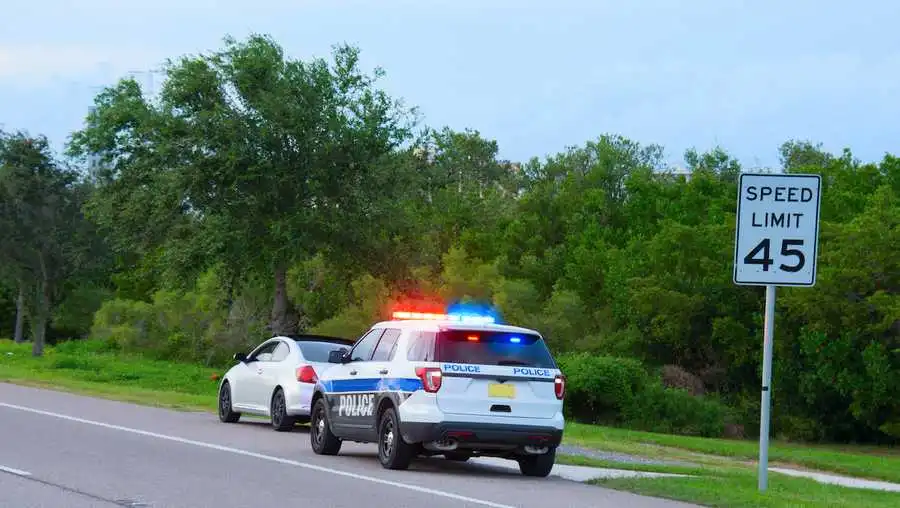Pulling over on the roadside is a common move that drivers often make while traveling.
Whether it’s a rest stop, a parking lot, or the side of the road, getting back into traffic requires careful consideration and compliance with traffic rules.
This article examines the key aspects of a safe exit from road stops and emphasizes the importance of appropriate detection, signaling, and communication techniques to ensure a smooth and safe return to traffic flow.
The key aspects of a safe exit from roadside
1. Assess traffic conditions:
Drivers need to assess the prevailing traffic conditions before leaving a road stop. This includes assessing the speed and density of oncoming traffic, checking for potential blind spots, and considering the presence of gaps in traffic flows. A detailed assessment of traffic conditions provides the basis for making informed decisions during the departure process.
2. Correct use of signals:
The use of signals is an important part of communicating intentions on the road. When leaving a road stop, the driver must activate the turn signals in time to indicate the intention to return to traffic. Signaling provides important information to other drivers so they can anticipate traffic and adjust their driving style accordingly. Clear and timely signs improve overall road safety and promote smoother traffic flow.
3. Checking blind spots and mirrors:
Checking blind spots and mirrors is a necessary step before leaving a road stop. Blind spots, areas around a vehicle not visible from mirrors, can contain invisible vehicles. A glance over the shoulder helps drivers identify potential hazards in these blind spots. Regular checking of the rear and side mirrors provides a comprehensive overview of the surrounding traffic and ensures safe merging.
4. Estimating traffic gaps:
Estimating traffic gaps is an important skill when driving from a roadside stop. Drivers must identify appropriate gaps in the traffic flow to allow for smooth and timely merging. It is important to avoid trying to merge into a gap that is too small or trying to outrun rapidly approaching vehicles. Accurate estimation of gaps minimizes traffic disruptions and reduces the risk of potential conflicts.
5. Priority:
When leaving a road stop, the driver must give priority to oncoming traffic. Even if there are gaps in traffic, it is important to ensure that merging does not interfere with the movement of other vehicles. Respecting the right of way is a shared responsibility that contributes to the overall safety and efficiency of the road network. Drivers must be patient and wait for the right opportunity to merge.
6. Acceleration and Aggregation Techniques:
Proper acceleration and aggregation techniques are key to successful traffic stops. Drivers must gradually accelerate to the speed of oncoming traffic, which ensures a smooth transition. Sudden or slow acceleration can cause hazards and disrupt traffic flow. Merging should be a controlled and considered process that allows the driver to blend smoothly with the speed of the road.
7. Adaptation to traffic speed:
When leaving a road stop, drivers must adapt to the speed of the surrounding traffic. Freeways and expressways often have higher speed limits than local roads, requiring rapid speed adjustments. Adapting to traffic speed not only increases the safety of the merging process but also contributes to the overall flow of traffic on the road.
8. Driving on different types of roads:
Leaving a roadside stop can vary according to the type of road. Merging on busy highways may require stronger acceleration and drivers must be prepared to react to the speed of fast-moving traffic. A measured approach on local roads may be appropriate. Understanding road characteristics and adjusting merging strategies accordingly ensures a safe and efficient outing.
9. Awareness of pedestrians and cyclists:
In addition to dealing with vehicular traffic, a driver must consider pedestrians and cyclists when driving from a roadside stop. Check if there are junctions or dedicated cycle lanes. Pedestrians and cyclists have the right of way in these areas and drivers must be extra careful and yield to them if necessary. Awareness of vulnerable road users contributes to a safer overall driving experience.
10. Consideration of weather conditions:
Weather conditions can seriously affect leaving a roadside stop. Adverse weather, such as rain, snow, or fog, can reduce visibility and affect traction. In bad weather, drivers must be extra careful, adjusting their speed and acceleration to the prevailing conditions. Weather-appropriate driving habits increase overall safety on the road.

Conclusion:
Pulling out a traffic stop is a routine but critical operation that requires skill, awareness, and respect for traffic rules. By assessing traffic conditions, using signs correctly, checking blind spots, and using effective merging techniques, drivers contribute to the overall safety and efficiency of the road network. When driving on local roads or merging onto freeways, the exit process requires a conscious approach that prioritizes safety, considerate driving, and the smooth integration of vehicles back into the flow of traffic.
